Health
Student government creates new department of student athlete relations
Notre Dame student government has created a new department of student athlete relations partially in response to an ongoing $2.8 billion lawsuit, House v. NCAA, that has the potential to upend college athletics. The suit, which began over a dispute about name, image and likeness (NIL) revenue sharing, was granted class-action status in 2023. If […]



Notre Dame student government has created a new department of student athlete relations partially in response to an ongoing $2.8 billion lawsuit, House v. NCAA, that has the potential to upend college athletics.
The suit, which began over a dispute about name, image and likeness (NIL) revenue sharing, was granted class-action status in 2023. If approved, the lawsuit would provide billions of dollars in back-pay damages to former student athletes and also allow colleges to begin revenue-sharing programs enabling them to pay athletes directly. Previously, student-athletes could be awarded scholarships from colleges but were not paid directly.
Importantly, the settlement was also drafted to include limits on the number of athletes that schools could have on their rosters. These roster limits would replace the NCAA’s current scholarship limits, which would force some colleges to cut student athletes.
However, on Wednesday, the judge overseeing the settlement, Claudia Wilken, ordered the two parties involved in suit to rewrite the section of the settlement dealing with roster-limits, stating that she would not approve the case if it would harm student-athletes who were part of the plaintiff’s class.
As the settlement was being negotiated, Notre Dame’s student government formed a new student athlete relations department, created by an omnibus senate bill that reshaped the executive cabinet. That bill, the first of the 2025-26 senate’s term, was passed April 2 with 32 affirmative votes, two negative votes, and four abstentions.
Student body president Jerry Vielhauer ran with the creation of this department as a part of his platform.
The director of the student athlete relations department, Robbie Wollan, who is also a walk-on member of Notre Dame’s football team, said there were a number of needs that prompted the creation of the department.
“There’s been a lot of press about athletes’ mental health over the past decade or so, but still a lot of people don’t know a lot about that … We have the sports psychologists, we have campus wellness centers, but there are a lot of challenges that student athletes face that are being brought up now, it’s not something that’s going to be in the future, we can change it right now,” he said.
Editor’s note: Vielhauer and Wollan were interviewed before judge Wilken ordered a modification of roster-limits.
Vielhauer was aware of the NCAA legislation when he went to create the new department, but his initial idea came while reviewing old student government administrations and centered more upon increasing representation for student athletes, noting that athletes make up roughly 10% of the student body.
“That is a very sizable portion of our student body, and for that group to not have any representation in student government was definitely, absolutely concerning to me … We have a lot of these diversity and inclusion departments to make sure that we are making every student feel like they’re part of the campus community, and I thought that we should not have student athletes not be included in that group,” Vielhauer said.
Wollan said that the department also has concerns over the House v. NCAA settlement.
“It will impact college athletes for the rest of college. The NCAA is making some really harsh decisions and not taking much feedback,” he said.
Wollan emphasized that if the roster-limits were adopted, the changes would mostly eliminate walk-ons, but noted that for many sports, scholarship athletes might also be cut. He added that Notre Dame is still waiting until the settlement is finalized before making roster cuts, but noted that some athletes have been told it would be in their best interest to enter the transfer portal.
Vielhauer hopes that athletes encouraged to enter the transfer portal won’t feel “forced to leave,” adding, “The detriment is this team limit cap. Our focus is going to be helping to take those athletes, who — they’ve been focusing on working so hard for this sport their entire life, and even after a couple years you’re on campus, to now be cut and told you’re no longer part of this team. What’s your friend group at that point? Where are your resources? Where do you want to feel welcome on campus?”
Wollan clarified that to support students impacted by the NCAA settlement, they’ll be aiding with the transition in terms of shifting away from reliance on sports psychologists to campus mental health resources, assisting them in developing closer connections with their academic advisors after shifting away from academic services for student athletes, “providing them more opportunities as they make that transition to being a student here.”
“Student athletes base so much of their identity on their sport. And if it is just completely wiped out in a split second by something that is completely out of your control, that’s very mentally and emotionally damaging to somebody,” Wollan added.
Wollan added that athletics director Pete Bevacqua has been transparent with athletes regarding the ruling and Notre Dame’s approach.
“Much of it is out of Notre Dame’s control, and they’re trying to handle all these decisions in the best way possible with their athletes’ best interest in mind,” Wollan said.
In written statements sent to The Observer after Wilken ordered a modification of roster-limits, both Vielhauer and Wollan said they are continuing to track the progress of the settlement.
“We are continuing to monitor this situation and evaluate the best next steps given whatever the outcome may be … At the end of the day, we are just going to be trying to figure out how to best support every student on campus, including our student-athletes,” Vielhauer wrote.
Wollan expressed gratitude for Wilken’s decision.
“Athletes around the nation are extremely grateful for Judge Wilken’s push to create a phase-in plan for roster limits. We are monitoring the process carefully, but will have to wait until a final decision is made to ensure we can make the best choices possible to support our student athletes. I am confident we will be prepared to take on whatever lies ahead, regardless of what decision is made,” Wollan wrote.
The department’s concerns are not limited to the House v. NCAA settlement, however. Vielhauer emphasized the need for stronger integration of student-athletes into the broader campus community.
“It’s very important to us to make sure athletes feel a part of campus, of that community, and that beyond just that, we also help to create a bridge and a strong bond between student athletes and the student body in general,” Vielhauer said.
He attributed the need for this bridge to “a kind of divide starting to happen on campus with NIL, because there’s a sense of jealousy I think a lot of students naturally will feel toward athletes being paid to come here and play a sport.”
Vielhauer clarified that this divide can sometimes stem from the frequency of student athletes not living on-campus. The University’s website states that “Notre Dame students are required to live on-campus for six semesters.” However, a number of student athletes who have yet completed this on-campus residency requirement are assigned dorm rooms but do not occupy them, opting instead to live off-campus.
Wollan dismissed that concern. “That is not a special privilege, they just financially can get a spot off campus while maintaining that dorm eligibility,” Wollan said.
Elaborating on the divide, Vielhauer said, “There are obviously special resources that student athletes have for a number of reasons. When everyday students don’t have the same resources, it can be difficult to at the same time see those athletes as having their own separate, real challenges.”
Wollan hopes to address misconceptions about the department, noting that they’ve received feedback in which “people are saying you’re giving athletes more physical resources, more exclusive opportunities,” despite this not being the case.
“We are not giving athletes more things. We’re helping maximize what they already have,” he said. He added that initiatives will include assisting students in getting more involved with dorm life, especially coaching intramural sports, as well as helping them to navigate opportunities to receive NIL funding and managing their responsibility to “represent Notre Dame at the highest level.”
“Notre Dame is always focused on leading. How do we get our student athletes, who have such an incredible platform, to lead Notre Dame to be one of the best universities in the world? Through college athletics, that’s a big opportunity to use that. I think a lot of schools aren’t making the most of that,” Wollan said.
Vielhauer shared that their team has been meeting with a lot of administrators regarding their platform, but they have not yet had time to discuss this with Notre Dame’s athletics department, and does not see this happening until the fall.
Vielhauer and Wollan are “leaning towards” having the department consist mostly of student athletes, providing them the biggest say in the matters the department addresses. Members of the department will be selected by the last day of classes and the department will begin to meet in the fall, consistent with other departments.
The Observer reached out to the athletics department for comment, but did not receive a response by deadline.
Health
Chasing History
Jake Canter has always been the youngest of his friend group. The 2026 Olympic Winter Games hopeful was always the quiet kid growing up—more of a fly on the wall listening to everyone else. But now, as an adult, he’s speaking up. “I’m asking a lot of questions of my peers, like how they land […]


But now, as an adult, he’s speaking up.
“I’m asking a lot of questions of my peers, like how they land their tricks,” he said. “Everything is interesting to me, no matter what it is, and if it can help make me a better boarder, I want to figure it out.”

Jake Canter sending it during the Red Bull Performance camp in Saas-Fee
© Frederik Kalbermatten
Once upon a time, snowboarders—like skateboarders—represented an element of counter culture, keeping the party going on the slopes. But it’s a different era for action sports. Canter said it’s cool to go to bed early, it’s cool to go to the gym and it’s actually cool to be healthy.
While the partying of the 90s still occurs, it doesn’t align as much with Canter’s goals. What does align is being the best he can be, learning and working with the best in his field, and hopefully showcasing his talents at the 2026 Winter Olympic Games.
“I look at snowboarding differently from other athletes in that it’s 10 percent skill, 90 percent mental,” Canter said. “At the end of the day, you have to push yourself to the limit to be the best on that mountain.”

Jake Canter Fs 360 during the Red Bull Performance camp
© Frederik Kalbermatten
I look at snowboarding differently…it’s 10 percent skill, 90 percent mental,” Canter said. “At the end of the day, you have to push yourself to the limit to be the best on that mountain.
Canter is also heavily focused this offseason on conditioning, adding consistent time in the gym to his typical snowboarding and physio workouts.
“I’m 5’8 and weigh 150 pounds, so I need to maintain my body the best I can,” he said. “I’ve gotten into a great routine of stretching, and probably spend more time stretching and rolling around on the floor after a contest than I do actually snowboarding that day.”
It’s why Canter now focuses on eating well, stretching, and going to the gym—activities that might have been disregarded by previous generations that Canter now views as cool and fun.
“When I was younger, it wasn’t cool to go to the gym as a snowboarder,” Canter said. “You didn’t want to be seen as a ‘jock.’ But now, being healthy is cool, and taking care of your body is even cooler. I want to snowboard until I’m 80. If you’re not taking advantage of the opportunity to better yourself on and off hill, you’re really missing out.”
Because professional snowboarders are still athletes and still need to maintain their minds and bodies like any other professional competitor.
“To be at the highest level, it’s not just physical now,” Canter said. “You have to have so much trust in your body and in your mind to try that new trick or that never-been-done-before thing. You want to be as strong as possible going into that run to make sure there is no chance of failure.”

Jake Canter poses for a portrait during Men’s Snowboard Slopestyle
© Christian Pondella
And while the physical demand of preparing for an Olympic run has been intense, Red Bull has provided him with amazing trainers and sports scientists—people just as interested in bettering the athletes as the athletes themselves.
“Going into a gym with other athletes who are as determined as you to be the best athletes is something you can’t gather from anywhere else,” Canter said. “Being able to look at people who have those Olympic golds and other medals and seeing the effort it took for them to get those—that motivates you even more because it’s right there next to you and you’re seeing it happen.”
As part of his preparation, Canter has also been waking up earlier to start his day with a workout.
“I’ll have a Red Bull before my session or throughout my session for the energy needed to conquer the day,” he said. “It helps me get ready for the session.”
To be at the highest level, it’s not just physical now. You have to have so much trust in your body and in your mind.
“At the APC, you’re able to test how much stronger you’re getting, how much higher you’re jumping—whatever it is,” Canter said. “We have those tests to be able to track our improvements. For me, it’s core, neck and legs. Seeing all of that get stronger—and maintaining it—is awesome.”
Canter has one of the highest jumps ever recorded at the APC, and through his work there, he’s become more confident than ever about being able to take a slam, get back up, and try again.
“Training wise, having that confidence is huge,” he said. “From my work at the APC, I now look at snowboarding with the perspective of ‘letting the snowboard do it for me.’ I let the snowboard do it for me and try not to force anything. If you put a time limit on something like learning a new trick, you’re limiting yourself.”

Jake Canter sending it during the Red Bull Performance camp in Saas-Fee
© Frederik Kalbermatten
When Canter hits the mountain, he just wants to feel good and see what happens. If he feels good, he’ll try tricks. But he doesn’t pressure himself to figure out a certain trick on a certain day. Instead, he lets his tricks reveal themselves on the snow much like how a painter uses a canvas to reveal his art.
“I set goals but I don’t set timeframes,” Canter said. “When it happens, it happens. You can force things in life, but I choose not to because I don’t get as much gratification. Obviously when you work really hard at something, and it works out, that feels great, but if you force a certain timeframe or certain way, it doesn’t happen the way you intended and a different version of it happens. For me, the goal is to not force it and just let it happen naturally by having those goals exist in the back of my mind.”
“It also humbles you,” Canter said. “It’s so humbling to be around people who are better than you and who you’re better than. You learn so much, and for me, I just want to learn as much as possible, on and off snow.”
And when you give it your all out there on the snow, there’s nothing to regret.
“I try to simplify it,” Canter said. “At the end of the day, I try to have as much fun as possible. When I’m having fun with my friends, have good music in my ears, and feel strong physically and mentally, I feel like I can do anything.”
Part of this story
 Jake CanterAfter overcoming a serious head injury, snowboarder Jake Canter is now determined to make it to the very top of the slopestyle ranks.View Profile
Jake CanterAfter overcoming a serious head injury, snowboarder Jake Canter is now determined to make it to the very top of the slopestyle ranks.View ProfileHealth
High School happiness
At just 17 years old, Sarah Abigail Vera is turning conversations about mental health into something tangible — and surprisingly fun. The Central Union High School senior is the creator of High School: The Game, a mental health-themed board game where players aim not for wealth or power, but happiness. Developed under her own studio, […]



At just 17 years old, Sarah Abigail Vera is turning conversations about mental health into something tangible — and surprisingly fun.
The Central Union High School senior is the creator of High School: The Game, a mental health-themed board game where players aim not for wealth or power, but happiness. Developed under her own studio, Pancake Frog Studios Gaming, the game is quickly gaining attention for its heart, honesty and purpose.
“I always saw how most games were money-centered,” Vera said. “I wanted to create something more realistic and attainable — which, for me, is happiness.”
Instead of chasing dollar signs, players of “High School” collect “happiness tokens” while navigating challenges inspired by the real-life experiences of teens. By the end of the game, the player with the most tokens “graduates” with the highest emotional well-being.
The game, aimed at ages 13 and up, isn’t just about winning — it’s about starting important conversations.
“There are a lot of topics in the game that can be uncomfortable to talk about,” Vera said. “But those are the ones we need to be discussing. That’s how awareness begins.”
A Personal Mission
Vera created “High School” in the summer of 2024, following her own mental health struggles and a long path to diagnosis.
“I didn’t know much about mental health at the time, and it was hard even realizing what I was going through,” she said. “That’s why I think it’s important to help others understand — especially teens.”
Though she had help from a friend and guidance from her graphic design teacher, the project was largely self-driven.
“I did most of it myself,” she said. “My teacher helped format files so I could get it manufactured, but all of the core design and concepts came from me.”
From concept to launch, the project took about two months. The most challenging part, she said, was turning her creative idea into something that could be physically produced and played.
“Figuring out the design files and formatting for production was really tough,” she said.
Community Support and Next Steps
Vera credits the Imperial Valley Small Business Development Center (SBDC) with helping her understand the business side of launching a product.
“They gave me a lot of reassurance and support,” she said. “That really encouraged me to keep going.”
As part of Mental Health Awareness Month, the SBDC featured Vera in a live interview on May 20 to showcase how youth entrepreneurship and creativity can help destigmatize mental health. While the event was streamed live, Vera’s story continues to resonate beyond a single day.
The response to the game has been overwhelmingly positive.
“Everyone who’s played it has had fun, and they appreciate the humor and the realness of the topics,” Vera said. “It helps people connect.”
Looking ahead, Vera hopes to expand the game, create new versions and get it into schools, homes and counseling centers.
“I want it in as many hands as possible,” she said.
Staying Grounded
Despite her accomplishments, Vera stays focused on her well-being.
“Having a support system is key — my family, friends, therapist and my faith have helped me stay strong,” she said. “It’s important to keep those relationships close.”
Her advice to other young creators? “Keep going. Don’t let others’ opinions stop you,” she said. “If you believe in what you’re doing, that’s what matters.”
Vera is building a new standard — one that counts happiness, empathy and connection as the ultimate win.
Health
Arizona Men's Tennis Adds Georgia State Transfer Baran Soyler
Story Links TUCSON, Ariz. – Arizona Men’s Tennis head coach Clancy Shields has announced the addition of Baran Soyler, a junior transfer from Georgia State, to the Wildcats’ 2025-26 roster. Soyler earned First Team All-Sun Belt honors in singles this season after posting a 10-6 singles record and a 7-7 doubles mark while competing primarily at the top of the […]
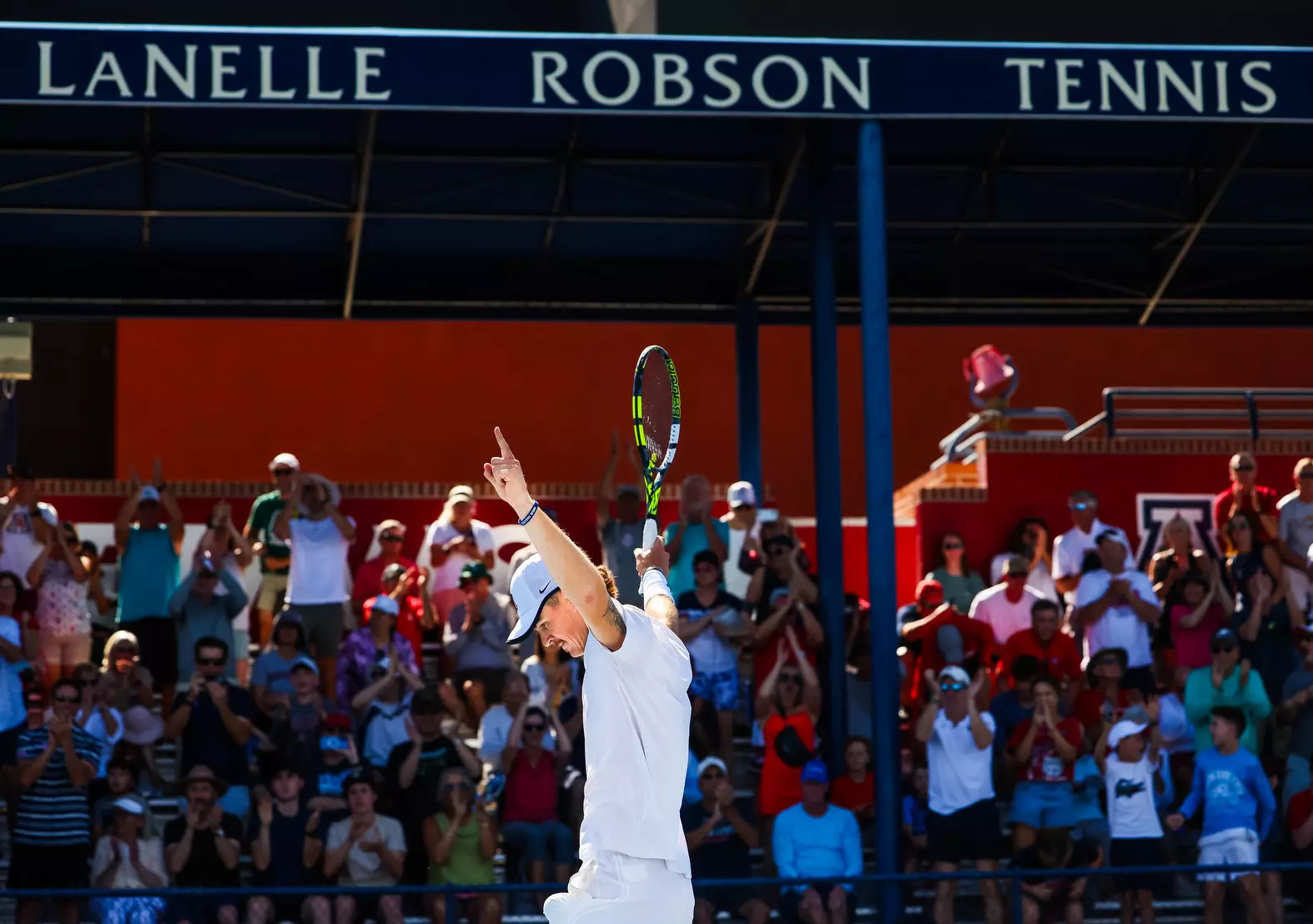

TUCSON, Ariz. – Arizona Men’s Tennis head coach Clancy Shields has announced the addition of Baran Soyler, a junior transfer from Georgia State, to the Wildcats’ 2025-26 roster.
Soyler earned First Team All-Sun Belt honors in singles this season after posting a 10-6 singles record and a 7-7 doubles mark while competing primarily at the top of the lineup. He was named the 2025 Sun Belt Conference Player to Watchand collected key wins over opponents from Chattanooga, Furman, Louisiana, VCU, and Coastal Carolina.
In 2024, Soyler was named the Sun Belt Conference Newcomer of the Year, earned Second Team All-Sun Belt honors in singles, and picked up Sun Belt Player of the Week recognition on Jan. 24.
“Excited to welcome Baran to the Wildcat family,” said Shields. “He is a very good player, strong physically, good tennis IQ, and a tough competitor. He is also a great kid and someone I have enjoyed getting to know. With three years of experience, he will add a much-needed veteran mentality in our locker room. I believe he can help our team and he will add a lot to our culture. Baran, welcome to the program, and I look forward to seeing you in the fall.”
A native of Adana, Turkey, Soyler began his collegiate career at Middle Tennessee State, where he went 3-1 in singles and 1-0 in doubles as a freshman. He transferred to Georgia State ahead of the 2023-24 season.
Soyler has also excelled in the classroom, earning President’s List honors in Spring 2024 and making the Dean’s List in Fall 2023, Fall 2024, and Spring 2025. He was named to the 2023-24 Sun Belt Commissioner’s List as well.
Health
The Hazards of an Athletic Identity
Balance is s a key ingredient for effective living. Careful attention is required to juggle the life roles (work, parent, student, athlete, etc.) that define each of our unique selves. There are obvious benefits to sports participation, but not when the rest of your life is neglected. Overemphasis on one or two roles can disrupt […]



Balance is s a key ingredient for effective living. Careful attention is required to juggle the life roles (work, parent, student, athlete, etc.) that define each of our unique selves. There are obvious benefits to sports participation, but not when the rest of your life is neglected.
Overemphasis on one or two roles can disrupt effective balance, causing other roles to crash to the ground, resulting in grave damage to important things. I’m sure you’ve witnessed such occurrences, perhaps in your own life.
Businesspersons, so wrapped up in climbing the corporate ladder, their families become an afterthought.
People who neglect their own health, claiming they don’t have time. Life is short and if you do not exercise and take care of yourself, it will be much shorter.
The focus of this two-part series is the athletic role, especially as it relates to young people, and the damage that occurs when athletic over-involvement causes imbalance and neglect of other life endeavors.
Part I explores the devastating impact that too much investment in athletics can have and the role of parents, coaches, and social media in the creation of an athletic obsession. Part II delves into what can be done to empower a balanced, healthy life and prevent the damaging impact of an obsessed athletic life.
Why Focus on Athletes?
I’ve witnessed the mental anguish and other damage resulting from a sports-obsessed existence. Everything from clinical anxiety, burnout, depression, declining academic performance, wrecked relationships, and over-use physical injury. Most devastating is a lost-in-the-woods sense of purpose in life that can happen when an athletic career ends.
How did this pervasive problem develop, what does it look like, and what is the contribution of coaches, parents, and social media in creating this imbalanced mess?
Athletic Identity
That’s an actual term defined by Human Performance Coach John Haime as:
“The degree to which you identify with your sport. It’s how you come to perceive yourself, and how others perceive you, and also serves as a basis for your sense of self-worth.”
There’s nothing wrong with athletics being part of your identity, but when it’s your entire sense-of-self it’s problematic.
Self-induced pressure and disruptive performance anxiety can result from so much self-value being wrapped up in athletic identity. That’s why so many young athletes implode or explode when things in sports don’t go their way. Their athletic identity and self-worth have been ruptured.
They attempt to repair the rupture with excuses for their poor performance and other misfortune. Taking responsibility would be a major hit to their ego, so they try to avoid the emotional toll of their bruised self-esteem by blaming referees, field conditions, and even teammates for their miscues. It’s a phenomenon that’s gotten to be common in today’s youth sports culture.
Then there is what happens when an athletic career is threatened or ends. Disappointment and sadness is understandable and normal for athletes who have spent so much time and energy devoted to sports, but it can be devastating when all their eggs have been placed in the sports basket and the bottom falls out.
Mental ruin is exactly what can happen when an athletic career ends due to getting cut, injured, or deciding to leave a sport. Such the-sky-is-falling-in devastation is a relatively new and surprising phenomenon when it comes to youth athletes.
The Adult Contribution to Imbalance
Over-zealous coaches piling excessive demands on the plates of young athletes, and parents that passively go along with it. Non-stop practices, physical training sessions, games , and other team activities that can weigh down the plate of a young person’s life.
School, family, social, and other realms take a back seat and are disrupted with little to no time for much of anything beyond what coaches throw at them. Sports involved kids also have little time to devote to other interests. When asked how much time they have to themselves on a typical school day during a sports season, most young athletes reply that they have about 1-3 hours of freedom.
Many coaches now require year-round commitment to their sport. Traditional season boundaries have disappeared, complicating the ability to play more than one sport or become involved in other organized activities.
So much commitment to sports makes finding time to do homework, being with family or friends, and other things a Rubik’s Cube challenge.
Also contributing to a problematic athletic identity are coaches and parents leading kids into believing that all this committed time will lead them to a college or professional sport career. It could happen, but for 94% of high school athletes their sports career will go no further than high school. They are being unfairly led astray by manipulative coaches and naïve parents that fuel false hope and unrealistic expectations.
Social Media Impact
Young people have always vied for peer status, but social media has turned it into an obsession. Sports have become a common way to attract such attention. Kids spend countless hours posting pictures, videos, and messages focused on their athletic prowess. Facebook moms and dads fall prey to similar behavior.
I have previously written about the poisonous impact of social media on youth. Suffice it to say that social media has contributed to an overemphasis on athletic identity, life imbalance, and the damage sustained by youth. Many of them base their entire being on social media, creating hazards for all young people, not just athletes.
Much of the toxicity derives from people comparing themselves on social media to their peers. As President Theodore Roosevelt wisely observed, “comparison is the thief of joy.” Joy has certainly been stolen from young athletes who live on an emotional roller coaster, battling for social media status with their athletic identity.
The Net Result
Such obsessed athletic identity breeds over-use physical injury, and a relentless fear of failure. A distaste for a previously enjoyed sport can evolve and lead to eventual burnout and/or quitting. Neglect of school, friends, family, and other life roles can ensue.
Then there’s the damage done to many young athletes when their sports career ends. Many of those kids are devastated. They have no idea what to do with their new free time because they’ve never had that kind of time to themselves and don’t know how or what to do with it.
I have witnessed a wide swath of high school and college athletes that have given no thought to what they would do with their lives after their school and athletic career ends. They draw a complete blank when asked about their career plans. It’s as though they expected their athletic careers to last a lifetime. Many of them experience severe anxiety and depression reflecting on a perceived empty future.
What’s the Cure?
That question will be addressed in a sequel to this piece. In the meantime, please reflect on the current content and related material contained in the link provided. Employ your creative resources to generate a plan of attack as a coach, parent, or other adult stakeholder to remedy athletic identity imbalance and associated problems.
Also, please delete your social media platforms.
Health
If you love pickleball, try padel — the ultimate full
Pickleball and other racquet sports are booming in popularity as people become more interested in improving their fitness and wellness by playing fun, interactive games. Padel is picking up serious steam here in the U.S. as another beneficial racquet sport worth playing. Padel combines the best parts of tennis and squash, and courts are opening […]


Pickleball and other racquet sports are booming in popularity as people become more interested in improving their fitness and wellness by playing fun, interactive games. Padel is picking up serious steam here in the U.S. as another beneficial racquet sport worth playing. Padel combines the best parts of tennis and squash, and courts are opening here, there, and everywhere.
I find racquet sports fun because you’re swinging the paddle or racquet around and moving quickly, giving you a solid heart-pumping, calorie-burning workout. Research reveals that playing racquet sports regularly improves cardiovascular function and musculoskeletal health and promotes mental well-being. I caught up with certified padel coach Diego Valderrama to get his insight into this increasingly popular sport, including his top tips, and how it compares to other sports like tennis and pickleball. Valderrama trains everyone from beginners to professional athletes at one of the largest facilities in South Florida.
Interview with expert padel coach Diego Valderrama
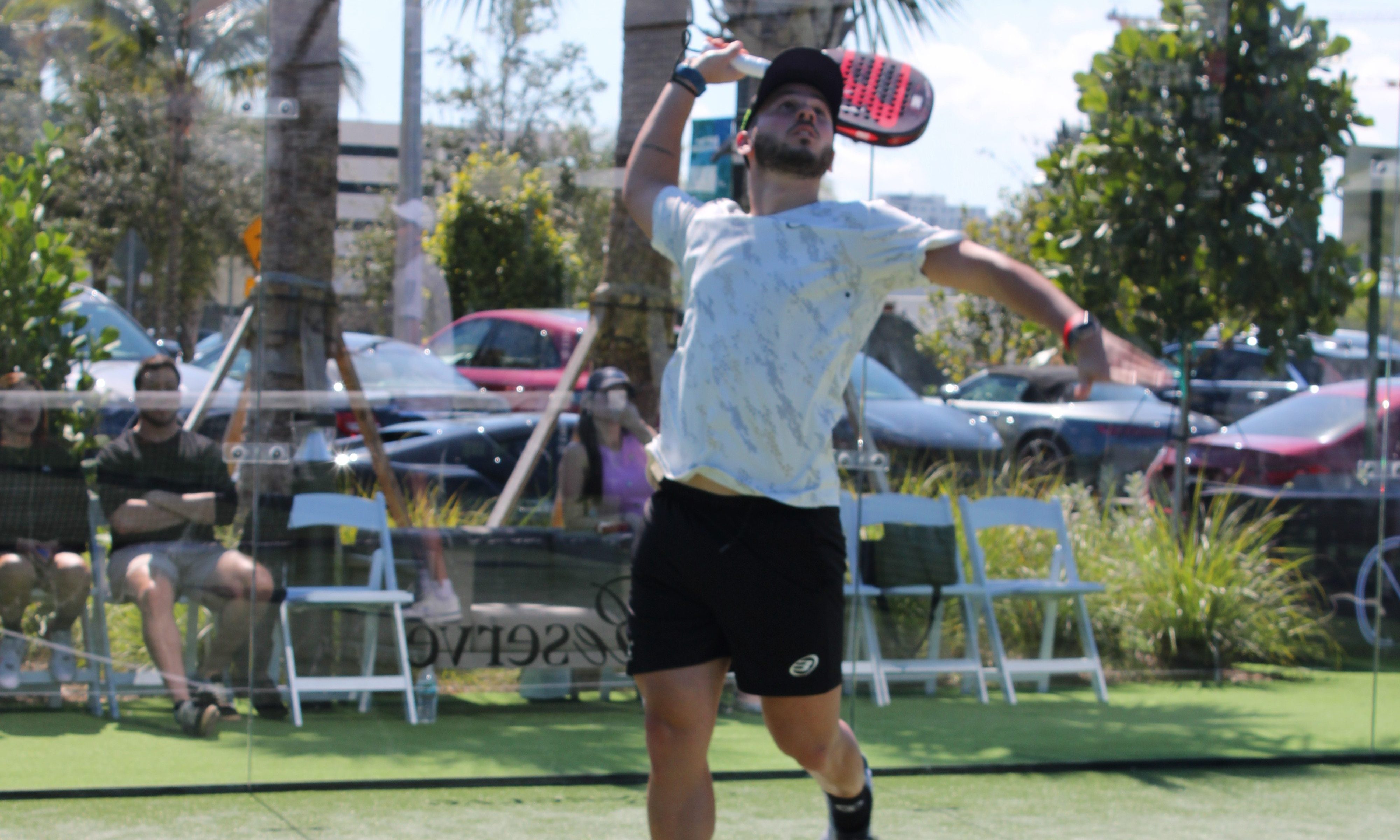
The Manual: What is padel sport? Could you explain how to play this popular racket sport?
Diego Valderrama: Padel is a dynamic and social racket sport that blends elements of tennis and squash. Played in doubles on a smaller, enclosed court, the game uses solid, stringless rackets and a slightly depressurized tennis ball. The walls surrounding the court aren’t just for show — they’re integral to gameplay, allowing for creative shots and longer rallies. Serving is underhand, and the scoring mirrors that of tennis.
What sets padel apart is its accessibility. It’s less about sheer power and more about strategy and positioning, making it appealing to players of all ages and skill levels. The sport’s social nature and fast-paced action have contributed to its rapid global growth. As of 2024, padel is played in over 130 countries with around 30 million players worldwide — 60% of whom are men.
The sport has seen explosive growth, with more than 60,000 courts globally, 70% in Europe. Countries like Norway, the UK, and Germany have shown court installation growth rates of 122%, 100%, and 92%, respectively, from 2022 to 2023. In 2023 alone, over 6 million padel rackets were sold, and the number of courts is projected to reach 85,000 by 2026, highlighting padel’s rapid expansion and global appeal.
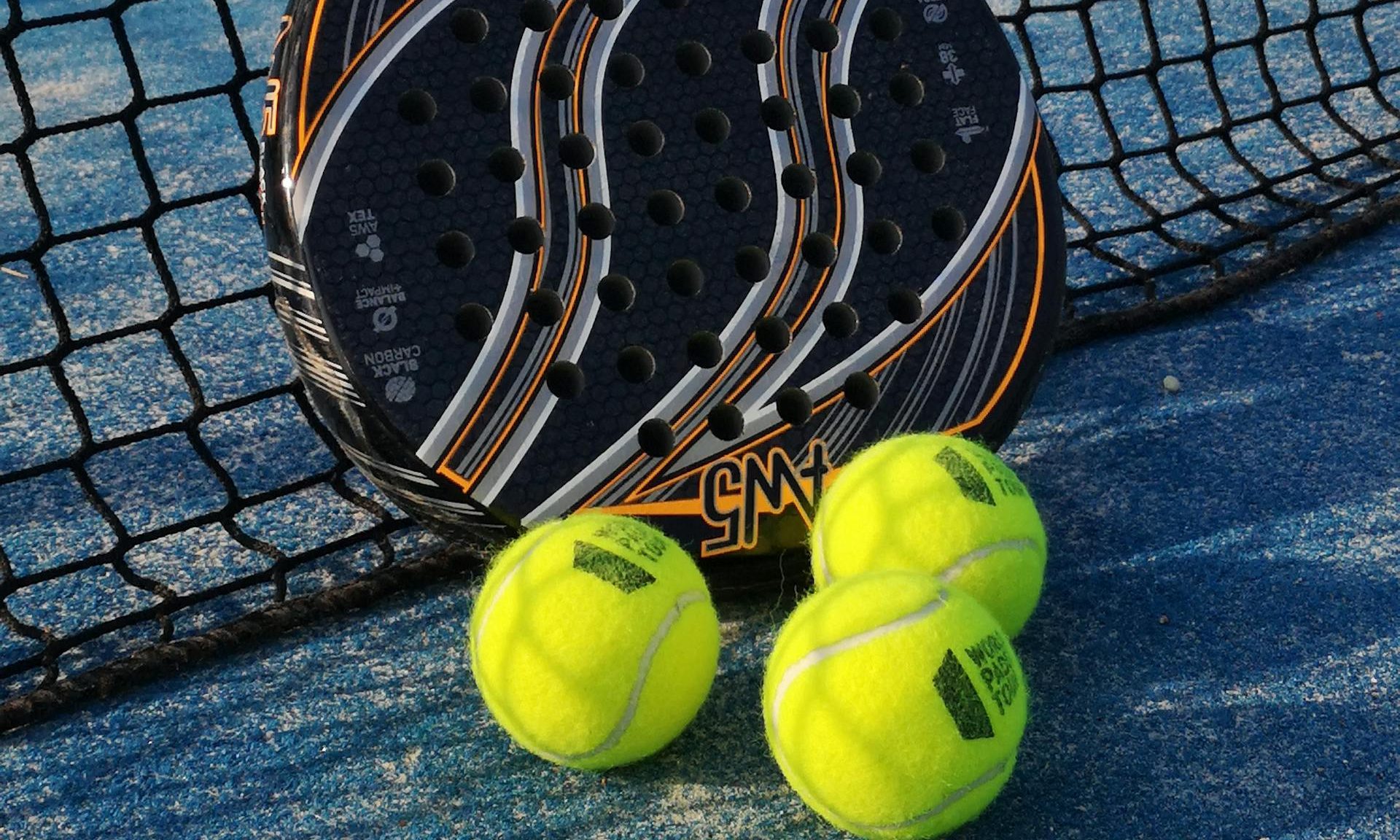
TM: Why and when did you first start playing padel?
DV: My journey into the world of padel began thanks to my brother, who first introduced me to the sport during a casual search for something new and engaging to do. From our very first game, I was immediately drawn in by the dynamic energy and strategic nature of padel. What started as a weekly hobby quickly evolved into a true passion. Motivated by this growing interest, and with my brother’s encouragement, I pursued formal training and completed my first coaching certification. I initially began coaching on the side, but over time, I transitioned into a full-time professional role.
Today, I’m fully dedicated to sharing my knowledge and enthusiasm for padel, helping others grow in the sport while continuing to develop myself as a coach and athlete.
TM: What are your favorite benefits?
DV: One of my favorite benefits of playing padel is how it combines physical activity with mental strategy. It keeps you in shape but also constantly challenges your decision-making and teamwork skills. I also really value the social aspect.
Padel brings people together in a unique way, whether it’s on the court or through the community around it. As a coach, one of the most rewarding benefits is seeing how quickly people fall in love with the sport and improve, regardless of age or experience. It’s incredibly fulfilling to be part of that journey.
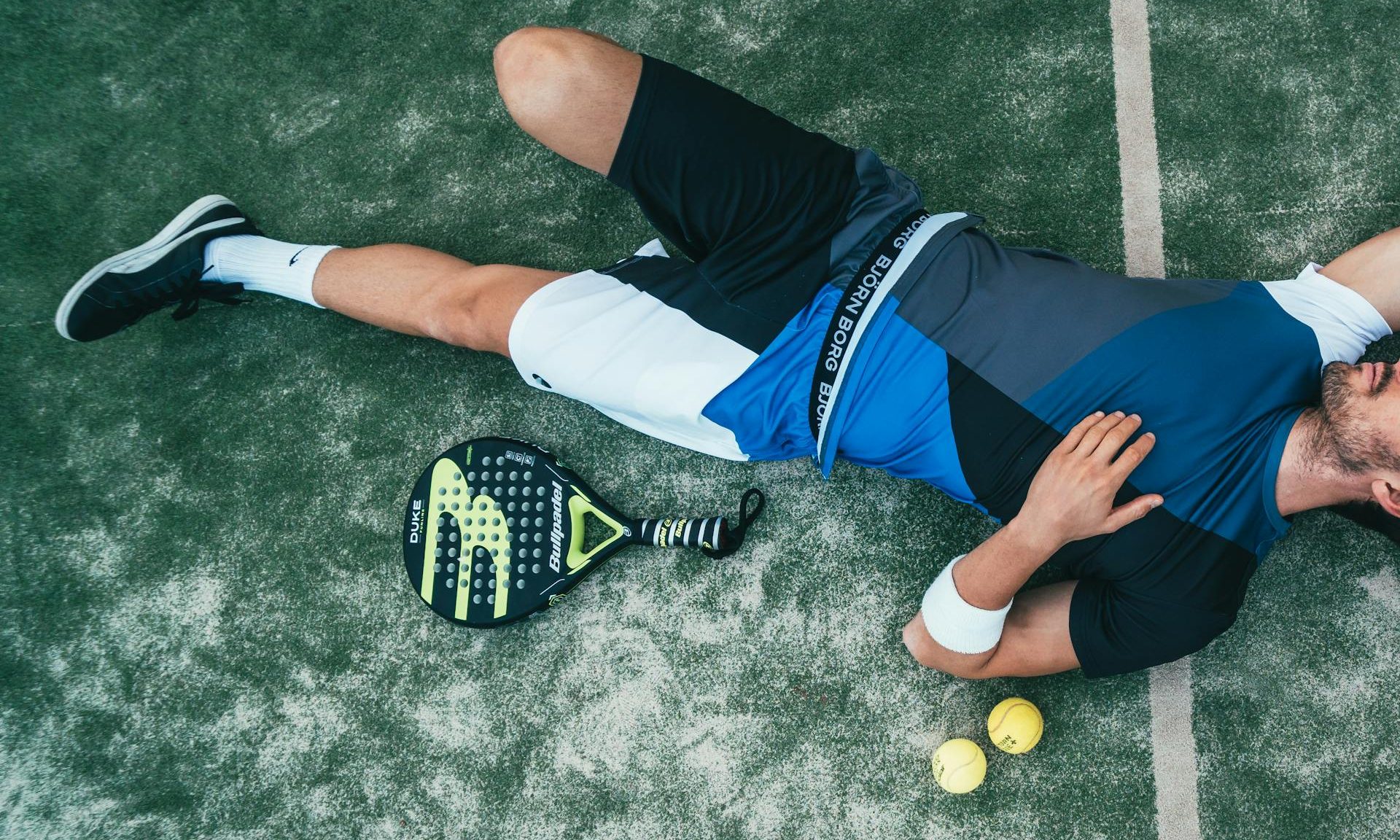
TM: How does playing padel improve cardiovascular fitness, and why is that important?
DV: Playing padel is a fantastic way to improve cardiovascular fitness because it involves constant movement, quick sprints, lateral steps, and rapid changes of direction, all of which keep your heart rate elevated throughout the match. Even though the court is smaller than a tennis court, the game is fast-paced and requires agility, endurance, and coordination.
Over time, this kind of activity helps strengthen the heart, improve circulation, and increase overall stamina. Cardiovascular fitness is important not just for athletic performance but for long-term health. It reduces the risk of heart disease, improves energy levels, helps with stress management, and supports a healthier metabolism. In other words, by simply enjoying the game of padel, you’re also building a stronger, more resilient body without even realizing you’re doing a workout.
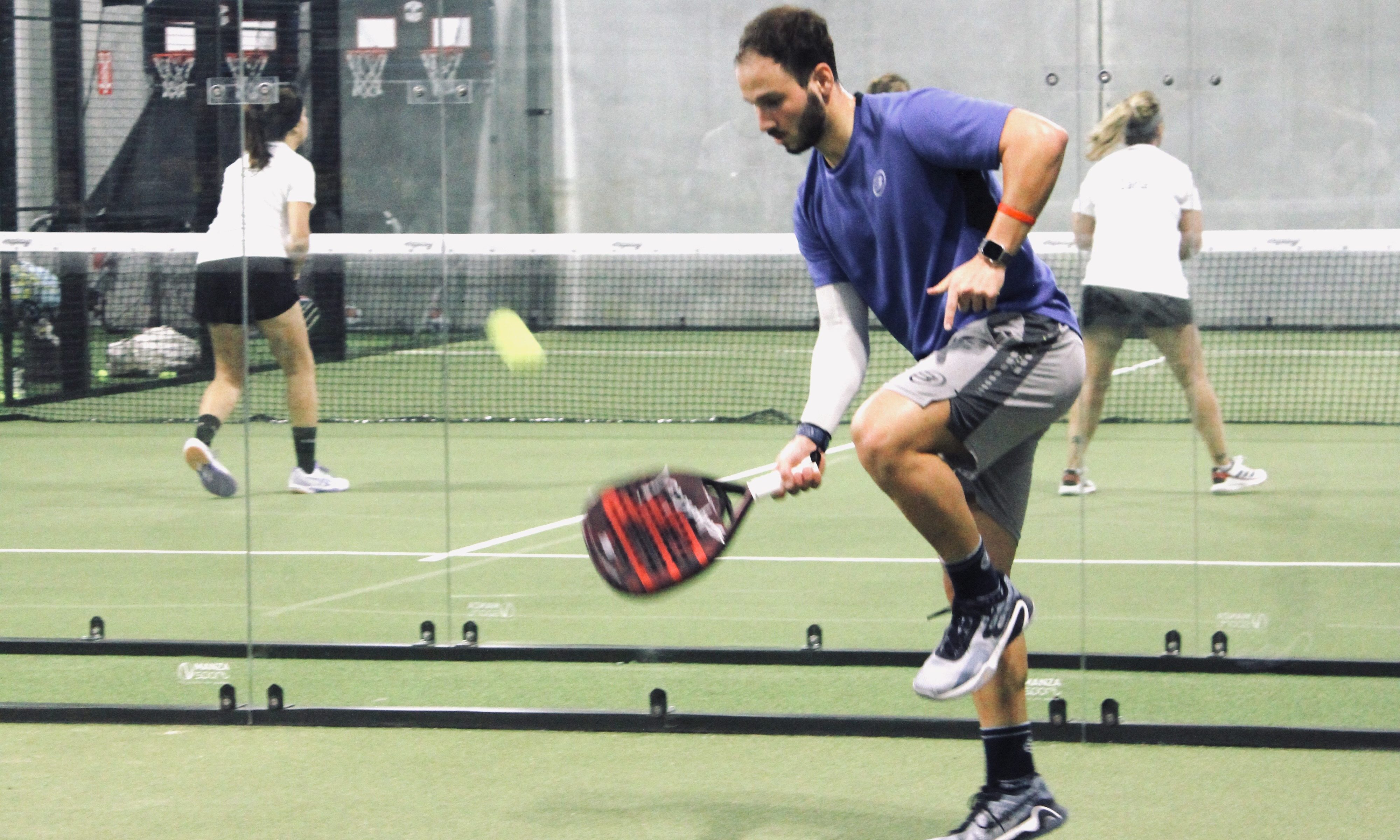
TM: Why are more men becoming interested in playing padel? Why is this fun sport gaining traction with American men?
DV: The growing interest in padel among men, especially in the U.S., can be attributed to several factors. First, the sport combines elements of tennis and squash, offering a dynamic and fast-paced game that’s easy to pick up but challenging to master. For men, especially those who are already into racket sports, padel presents a fun and exciting alternative that doesn’t require the same endurance or technical skill as tennis, making it more approachable.
Another reason for its increasing popularity is the social aspect. Padel is typically played in doubles, which fosters a sense of community and teamwork. The sport’s casual and accessible nature makes it an ideal activity for both competitive players and those just looking for a fun way to stay active. The fact that padel is also less physically demanding than some other sports, due to the smaller court and shorter rallies, means it’s easier for men of all fitness levels to enjoy.
In the U.S., padel is gaining traction as more facilities open up, offering a new recreational option. With its growing presence in major cities and the excitement surrounding its expansion, it’s becoming an appealing choice for those seeking a fresh, enjoyable, and social way to stay fit and engage in friendly competition.

TM: As a certified padel coach, you train professional athletes. How many times a week did the professional athletes train and play padel?
DV: As a certified padel coach working with professional athletes, the training regimen typically involves four to six weekly sessions, tailored to individual goals and upcoming competitions. These sessions include a mix of technical drills, tactical training, physical conditioning, and mental coaching to enhance performance on all fronts.
Professional athletes usually spend between 10 and 15 hours per week on the court, refining their skills, developing strategies, and maintaining peak physical condition. This comprehensive approach ensures they’re fully prepared for the demands of high-level competition.
TM: How long do the games typically last?
DV: Padel games typically last between 45 minutes and 1.5 hours, depending on factors such as the level of play, the format of the match, and the number of sets being played. In professional matches, a best-of-three set format is common, while in recreational play, it can vary from a single set to a full match. The fast-paced nature of the sport, with quick rallies and frequent changes in direction, makes for intense but relatively short games compared to other racket sports like tennis.
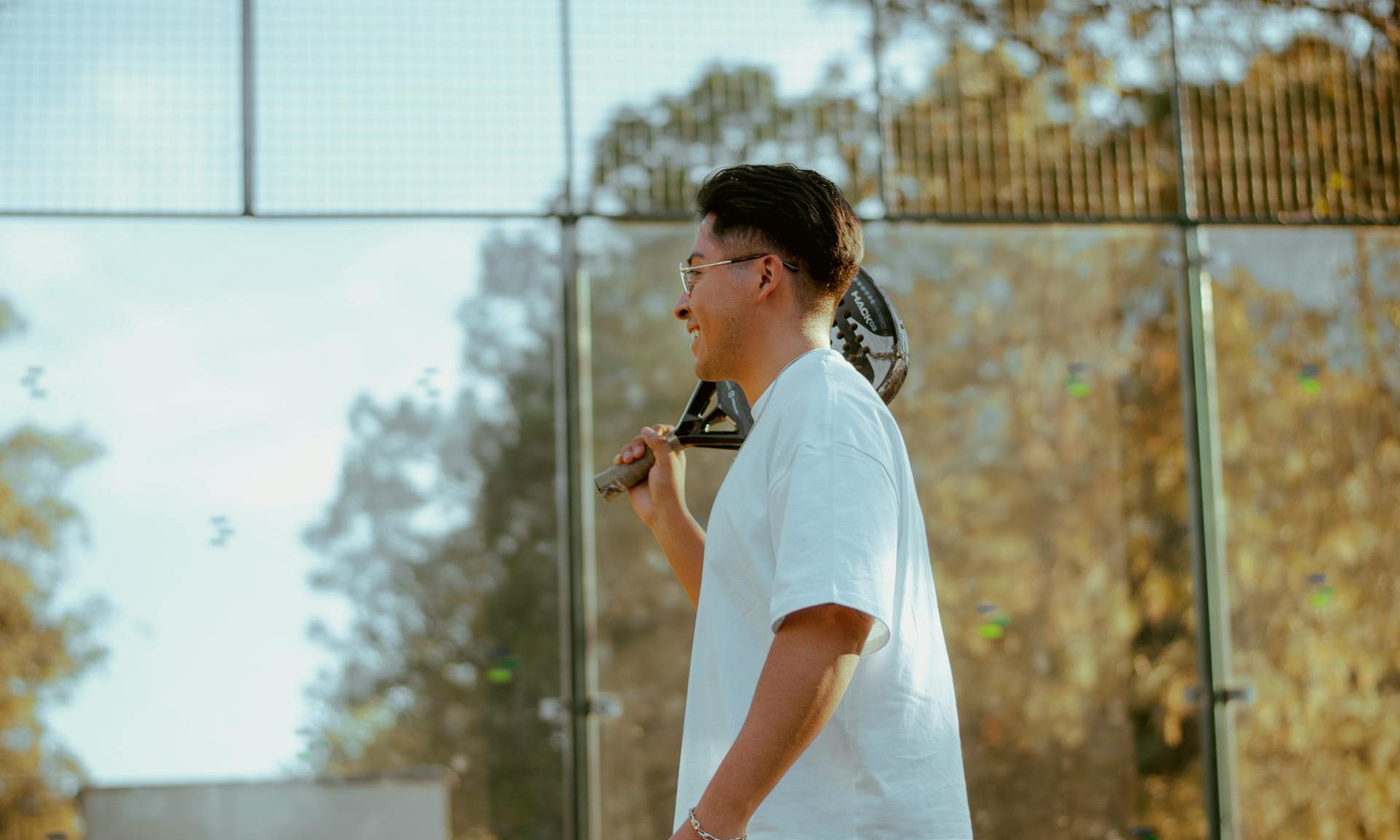
TM: Did frequently engaging in this sport improve athletic performance for those professional athletes you worked with?
DV: Yes, frequently engaging in padel has significantly improved athletic performance for the professional athletes I’ve worked with. The sport’s dynamic nature, which combines speed, agility, and strategic thinking, helps enhance both physical and mental attributes. On the physical side, the constant movement, explosive sprints, and use of lateral and vertical motions help improve cardiovascular fitness, endurance, and overall strength.
Mentally, padel sharpens focus, decision-making, and adaptability, all of which are crucial for high-level competition. The ability to quickly analyze the game, adjust tactics, and work effectively with a partner translates into improved performance not only in padel but in other sports as well. For many of the athletes I coach, incorporating padel into their training has not only enhanced their skills on the padel court but also positively impacted their overall athletic performance.
TM: How does padel compare to other racket sports like tennis and pickleball?
DV: Padel, tennis, and pickleball are all dynamic racket sports, but each offers a distinct playing experience. Padel is played on a smaller, enclosed court, using walls as part of the game, which creates fast-paced rallies and emphasizes agility and strategy. It typically involves doubles play and uses a solid racket without strings and a slightly depressurized ball.
In contrast, tennis is played on a larger open court, focusing on power and longer rallies, while pickleball is a faster, more accessible game, played on a smaller court with solid paddles and a lightweight plastic ball. Padel’s rapid growth, especially in Europe and now in North America, is fueled by its social and engaging nature, making it an attractive alternative to both tennis and pickleball.

TM: Is padel a more challenging sport to play than tennis or pickleball?
DV: Padel can be considered more challenging than tennis or pickleball in certain aspects, though it ultimately depends on an individual’s skill set and experience with racket sports. The smaller court and use of walls in padel require players to adapt quickly and develop a strong sense of positioning, strategy, and shot placement. While tennis demands powerful serves and groundstrokes, padel often requires more finesse and teamwork because doubles play is standard.
The ball’s slower pace in padel also means rallies can be longer, demanding greater endurance and mental focus. Compared to pickleball, which is often more accessible due to its smaller court and simpler rules, padel offers a more complex game that combines elements of both strategy and physical skill. While tennis may be more physically demanding in terms of court coverage and power, padel’s nuances with walls and positioning make it a challenging sport for those seeking a strategic and fast-paced game.
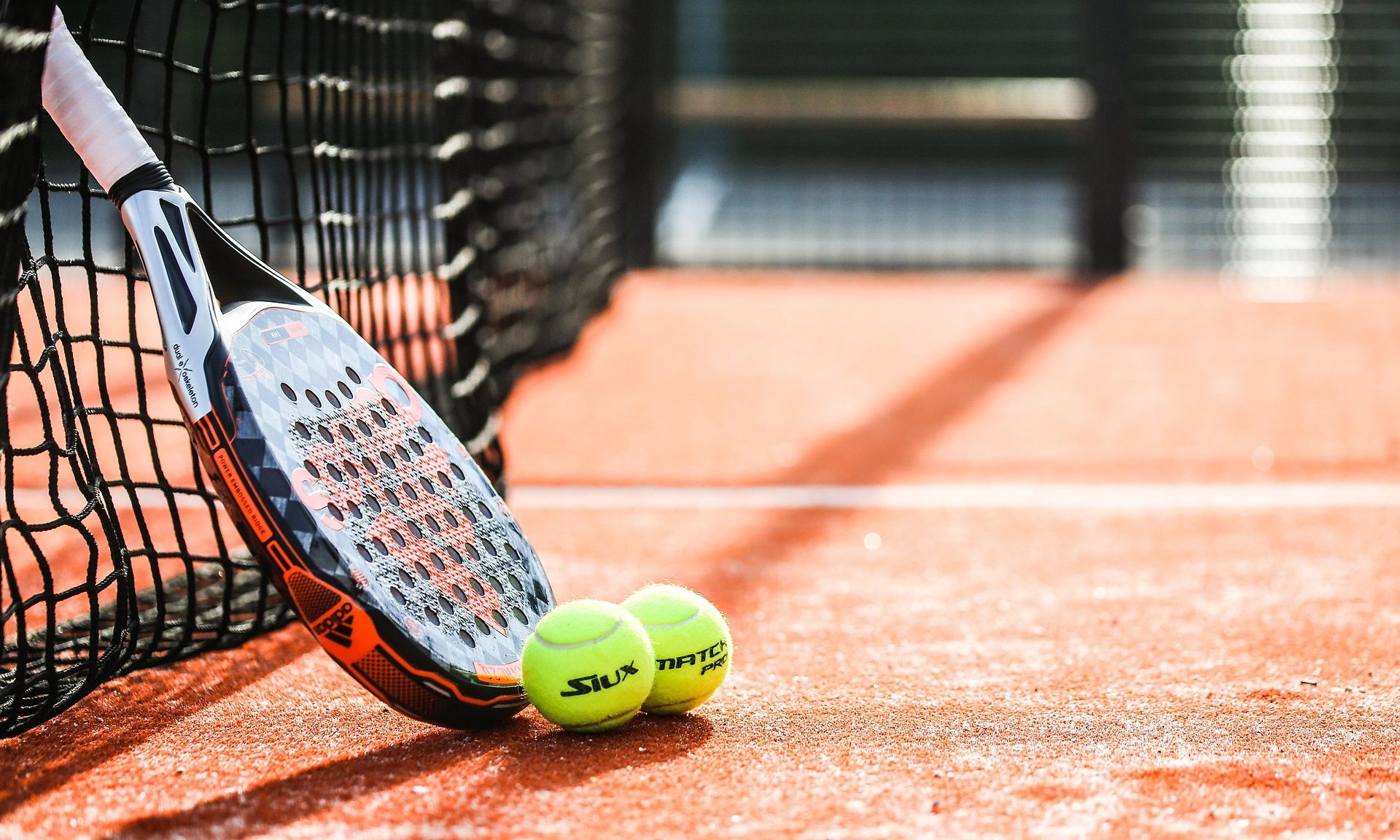
TM: Could you share your top beginner training tips with our readers who are new to the sport?
DV: First and foremost, enjoy every moment you spend on the court. The essence of padel is not just in the competition, but in the fun you have while playing. It’s also important to consider taking lessons from the very beginning to learn the proper techniques for each stroke. Many beginners start playing without the guidance of a coach, which can lead to developing incorrect techniques that are difficult to correct later on.
After each match, make sure to share your experience with friends—the social aspect of padel is one of its greatest joys, and the post-match camaraderie enhances the overall experience. Additionally, focus on improving your physical conditioning and footwork, as these are the foundation of a solid padel game.
As for the mental side of the sport, we can leave that to the competitive players, though building mental resilience will naturally come with experience. Padel is about enjoying the process and continuously improving, so take your time, stay motivated, and have fun!
Health
Mack Brown wants rule for athletes stay in school two years before transferring
Former North Carolina head coach Mack Brown is still on board with the NCAA transfer portal, but not the free for all. He wants kids to be in school for two years before opting to look elsewhere. For that to be a rule, you’d have to massively change the process of transferring. Brown argued athletes […]
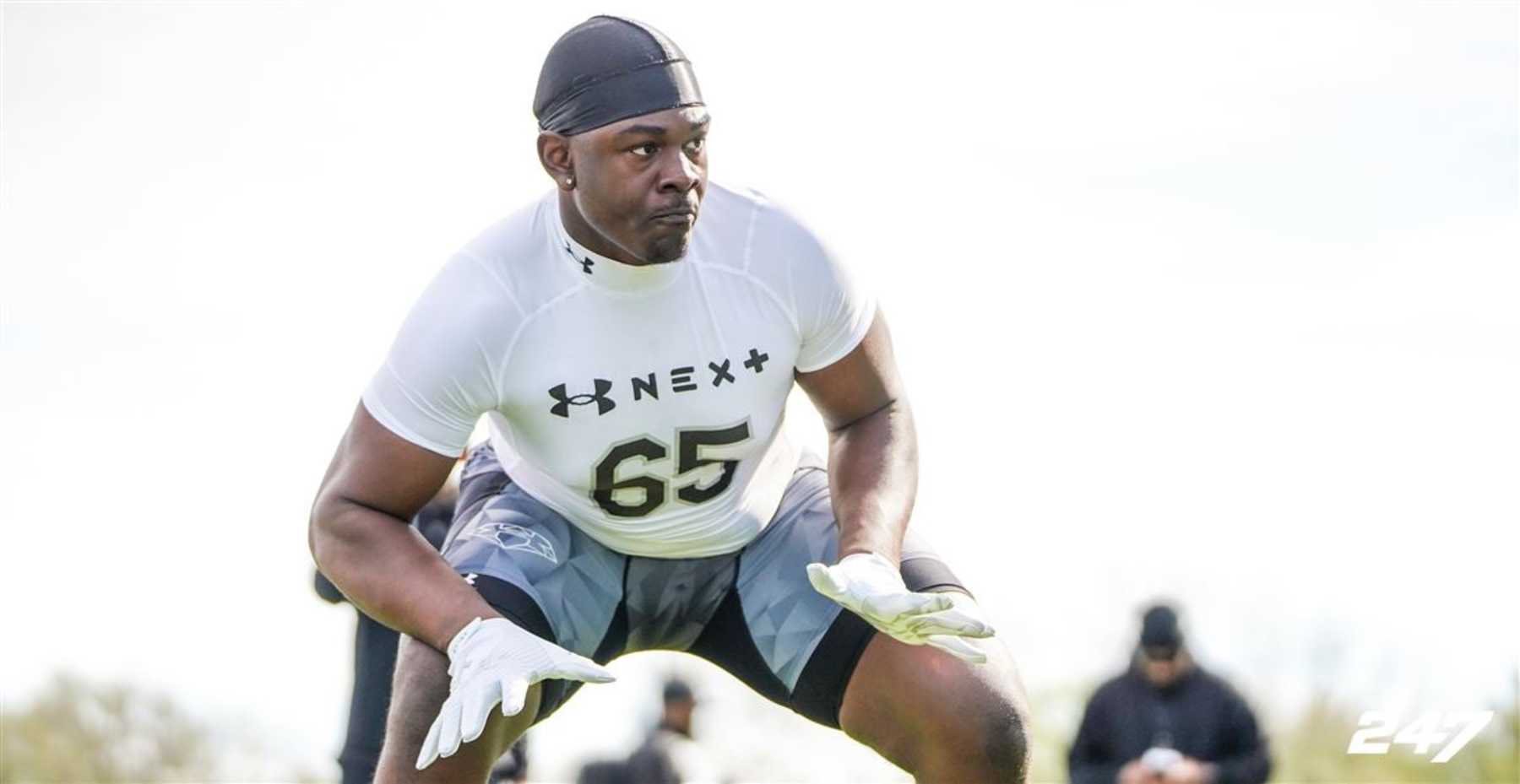

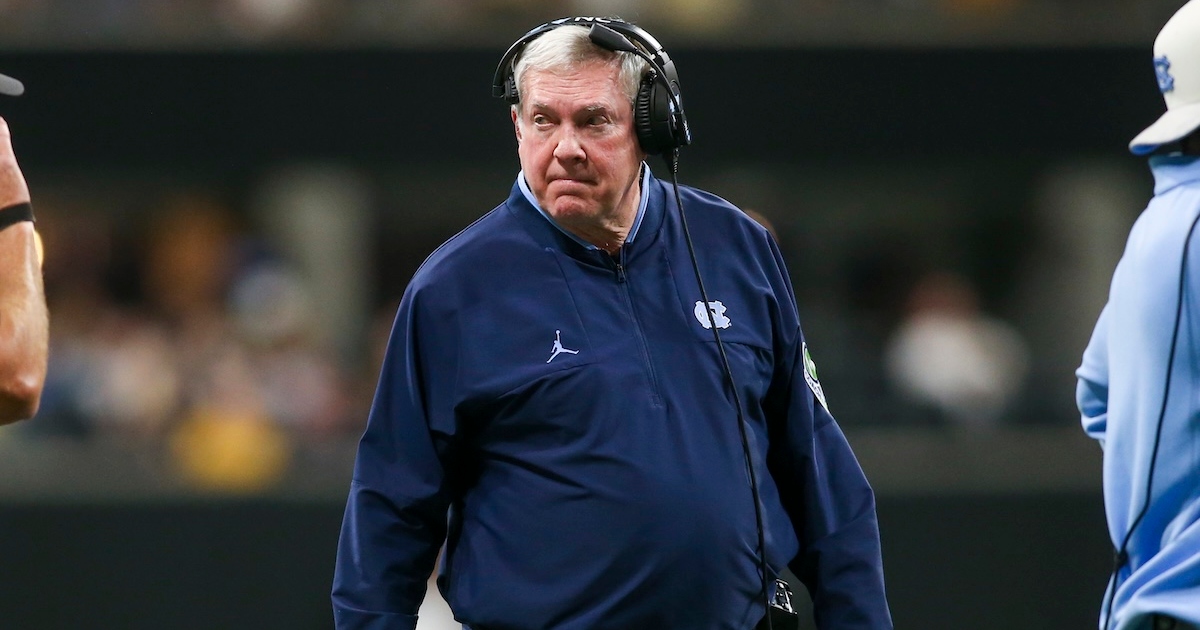
Former North Carolina head coach Mack Brown is still on board with the NCAA transfer portal, but not the free for all. He wants kids to be in school for two years before opting to look elsewhere.
For that to be a rule, you’d have to massively change the process of transferring. Brown argued athletes staying at a school for two years allows them to work into a starting role, finish their basic studies, or do the latter and realize they’ll have a better athletic opportunity elsewhere.
As of now, football players for instance, some can transfer in the winter window but then transfer again roughly three or so months later in the spring window. It’s something Brown isn’t fond of.
“This would be hard, you’ve got to look at it through Congress,” Brown said on Sirius XM. “But I really think kids should stay two years at a school when they get there, because they get mad as a freshman, they want to transfer. And that’s not right. We’re allowing kids not to have to work for something anymore. And if the stat I was given a few years ago, guys, is if you transfer once, you’ve got a 63% chance to graduate, because your classes won’t transfer. We’ve got kids transferring four or five times, they’re not going to graduate, and then they’re not going to get jobs, and then there could be mental health tied to it at the end.
“We’re not treating some of these kids fairly by allowing them the freedom to transfer anytime they want, and then maybe after that we go back through we had you transfer once, because I like the transfer rule. We had kids that couldn’t play, so if we made a poor decision, the kid couldn’t play, he should have a right to transfer. but you’d like to think, after two years, he’s getting ready to go into his major, he’s gotten rid of all the basic studies. He understands who he is better. He’s got two years, he’s got some film available, it would be easier to transfer up to that after that second year.”
On the surface, Brown’s idea makes some sense in regards to transfers. But, in the event of coaching changes, the can of worms is opened again. Players are free to work elsewhere.
Having credits transfer over is another difficulty and it could be worse with multiple transfers, but having an athlete stay in a school for two seasons could erase basics from one institution but not another, limiting options.
It’s safe to say Brown isn’t a fan of constant transfers and he’s not alone there. But there will have to be intricate rule changes in order to make this a reality.
-

 High School Sports3 weeks ago
High School Sports3 weeks agoWeb exclusive
-
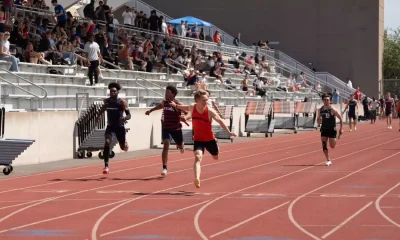
 Sports3 weeks ago
Sports3 weeks agoPrinceton University
-

 Sports3 weeks ago
Sports3 weeks ago2025 NCAA softball bracket: Women’s College World Series scores, schedule
-

 Motorsports3 weeks ago
Motorsports3 weeks agoBowman Gray is the site of NASCAR’S “Advance Auto Parts Night at the Races” this Saturday
-
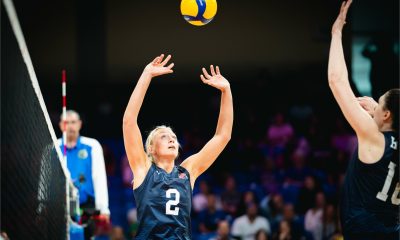
 Sports3 weeks ago
Sports3 weeks agoUSA Volleyball Announces 2025 Women’s VNL Roster
-

 Rec Sports3 weeks ago
Rec Sports3 weeks agoMontgomery County Honors First “Unsung Sports Heroes”
-
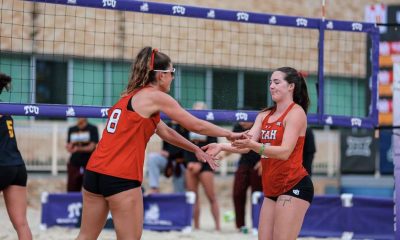
 Sports3 weeks ago
Sports3 weeks agoA fight to save beach volleyball and Utah athletics’ ‘disheartening’ answer
-
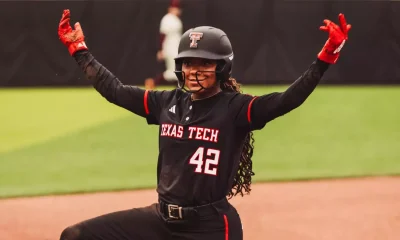
 NIL3 weeks ago
NIL3 weeks agoTexas Tech Red Raiders – Official Athletics Website
-

 Rec Sports2 weeks ago
Rec Sports2 weeks agoThe Program, a New Basketball Training Facility, Opening in Greenpoint This September
-
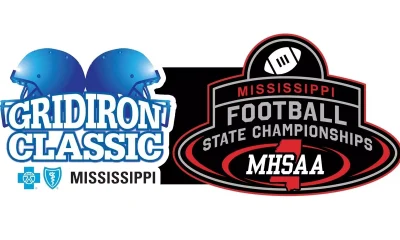
 High School Sports3 weeks ago
High School Sports3 weeks agoToday in the MHSAA

































